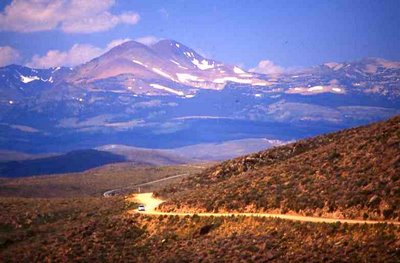
Mud season’s come early.
Most years, the dirt road that leads to our New Hampshire cottage doesn’t turn into a rutted, tire-eating gauntlet of sucking-wet goop until April. But we’ve had a mild winter, and the mountain snows began melting weeks ago. They've begun their trickling meander downhill toward the sea, turning any unpaved ground into sopping, brown sponge. Driving on it tests your focus, your shock absorbers and your windshield wipers; mud splatters and squishes in all directions, including up, covering your car to its roof.
Our dirt road is two and a half miles long. Two and a half gloppy miles into the woods to get to our place and two and a half gloppy miles back out to paved civilization. And, if you get to the cottage and realize you’re out of wine or OJ or toilet paper, well....
I just spent a few days at the cottage. When it was time to head home, I bumped and grinded my way over the muck and pulled into the town dump, my van looking like it’d been dipped in chocolate. “Mud season’s here,” I said to the scraggly man who runs the place. He was in his usual spot, draped over the edge of the dumpster, where he can scan what’s getting tossed and reach in and grab anything he deems useful.
“Yep. Already cost my wife new rotors and a pair of brake pads. Mud got all up inside and clogged everything.”
Over the past 20 years, there’s been intermittent talk about paving our road. And 20 years later, it remains dirt. Why? Because we love it.
A dirt road is a special thing. There’s something essential, challenging, alive about a road whose personae range from wind-whipped dust to hard-baked clay to snow-blown ice to clutching mud. A dirt road is earth, is Earth.
When I run on my dirt road, I see life you don’t see on a paved route. Butterflies resting in puddles, yellow and crimson wings moving like slowly-clapping hands; tiny, translucent salamanders soaking their orange skin in the cool mud; frogs croaking in the grasses that line the road's sloping shoulder; a snowy owl swooping from a tree on one side of the dirt track to a tree on the other; electric-green lichen taking root in the road’s moist, shady dips; worms sleeping in drops left by a recent rain.
In my travels, I’ve journeyed along scores of dirt roads, many in high, wild places like Tibet, Nepal, Peru, Guatemala. In most cases, I was a passenger. I saw and felt the hardscrabble rutted tracks from a seat in a smoke-belching bus; from a jitney crammed with farmers and kids and women with baskets of chickens on their laps; from the rear of a taxi or a hired car or a tour vehicle. To be sure, the experiences were rich, the roads spectacular (and occasionally frightening). But someone else was the driver.
It’s the dirt roads I’ve driven myself that hold the most wonder for me. When my hands feel the roughness of the road through the steering wheel and my feet feel her curves and hollows and stones through the timbre of gas pedal and brake, then the road becomes part of me and I part of it.
It is earth, is Earth.
(The photo at the top of this post is Route 120 out of Bridgeport, California, in the eastern Sierra Nevada. The best dirt road I ever rode. While on our Ribbons of Highway journey, the kids and I detoured to Bodie, a perfectly-preserved ghost town. The first 10 miles of Route 120 between Bridgeport and Bodie are paved. Then, as you drive higher into the sky and the purple grandeur of the Sierras wraps itself all the way around you, the pavement ends. The remaining three dirt miles to Bodie are magic.
Read “The ghosts of Bodie,” a story I posted last fall.)
LoriHein.com
